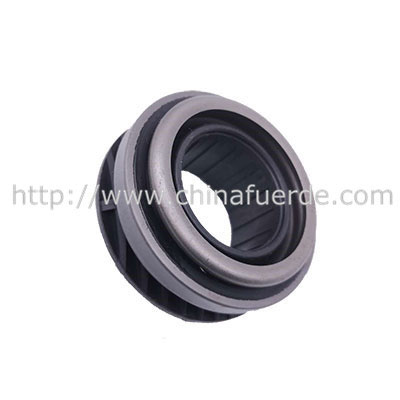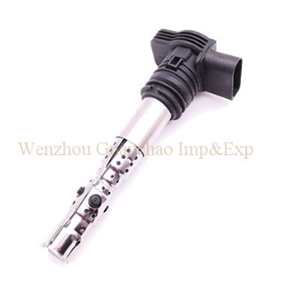Engine bearing manufacturers reveal the mystery of automotive engine bearings
Engine Bearing News Catalog:
How Engine Bearings Are Made
What are engine bearings made of
Can you replace a connecting rod bearing without pulling the engine
What Can Cause Engine Bearings to Fail
How Engine Bearings Work

CLUTCH RELEASE BEARING 41421-28002 HYUNDAI-ACCENT
How Engine Bearings Are Made
Bearings are an important part of automobile generators. The manufacturer of engine bearings will tell you below. Engine bearing manufacturers share the following 9 steps:
1. Manufacture of bearing ring
After the bearing rings are turned to the correct thickness, the inner rings are put into the outer rings; they are then ground to the exact thickness by a grinder, and the thickness is checked by a gauge after completion.
2. Grinding of inner and outer rings
The machine then separates the inner and outer rings and grinds their outer surfaces with a different machine. The outer ring goes into a grinding machine, which grinds its surface to a precise circle with the exact diameter, and a water-soluble solution avoids overheating the bearing ring, which can warp. The bearing ring does not leave the grinding machine until after the measurement.
3. Grinding of the raceway of the inner ring and outer ring Use a grinding stone machine with oily coolant to process the outer diameter of the bearing into precise roundness and size, and the inner ring and raceway are also completed by similar machines.
4. Polishing of bearing ring
Polish the bearing ring surface with a lubricated grinder stone until it is shiny.
5. Cleaning
Soak in oil in a stone grinder, then clean with kerosene.
6. Manufacturing of balls
The raw material for making balls is steel wire. The machine cuts the steel wire into sections, and then punches them into rough balls with a dying bed, and cuts off the protrusions on both sides with a grinder; another machine rounds and smooths them, and the whole process takes several days. After the balls are hardened in the furnace, they are cleaned with the cleaning agent. After the quality inspection, the finished balls are sent to the tank. The groove is placed on an automatic assembly machine, the ball feeder sends the balls through the hose to the pusher, the pusher pushes the correct number of balls into the raceway between the inner and outer rings, and the ball distributor arranges the balls evenly in the raceway.
7. Installation of the cage
Metal cages hold the balls in place on the raceways. The first machine installs half of the cages, which have slotted holes; the other machine then carefully installs the other half of the cages, which have notches. The machine rotates the bearing to test it, then fully connects the two cages, and the bearing is now installed.
8. Solution spray cleaning and quality testing
This vibration and noise detector checks whether the bearings can work quietly; some bearings require lubricating oil, and the machine applies the lubricating oil evenly on the raceway, and then covers the lubricating oil with a rubber ring. As a final quality test, an automated control tester is used to weed out bearings that do not meet weight requirements.
9. Laser marking
Acceptable parts are sent to a laser machine, which engraves information such as the model number and serial number on the bearing.
What are engine bearings made of
Automobile engine bearings usually adopt the structure of steel back + anti-friction alloy. The commonly used anti-friction alloys are Babbitt alloy, copper-based alloy, and aluminum-based alloy.
Babbitt alloys are divided into tin-based and lead-based types. Babbitt alloys have low fatigue strength, allowable specific pressure, and low operating temperature, and are generally used for gasoline engines with a low degree of strengthening;
Copper-based alloys are divided into lead bronze and copper-lead alloys;
Aluminum-based alloys are divided into high-tin alloys and low-tin alloys. Aluminum-based alloys are currently the most widely used in internal combustion engine crankshaft bearings.
Can you replace a connecting rod bearing without pulling the engine
The engine connecting rod cannot be replaced without opening it inside the engine. The crankshaft of the automobile engine is intact, but some main bearings of the crankshaft are severely worn or burned out, and the main bearings must be replaced.
Maintenance of connecting rods and connecting rod bearings:
(1) Check the connecting rod bearing for defects such as peeling or scars. If damaged, it needs to be replaced with a new one.
(2) Use the feeler gauge on the connecting rod tester to check the degree of bending and twisting of the connecting rod. If the connecting rod is bent or twisted, it must be corrected or replaced with a new one. The maximum bending limit of the engine connecting rod is generally: 0.05mm/100mm; the maximum deformation limit is generally 0.05mm/100mm.
(3) Measure the clearance of the connecting rod head. Install the plastic clearance gauge on the connecting rod journal, and pay attention that the plastic clearance gauge cannot be placed on the oil hole. Tighten the connecting rod cap to the specified torque, taking care not to turn the connecting rod or crankshaft. Then remove the connecting rod cap and check the width of the flattened plastic gap gauge at its widest point. If the connecting rod journal clearance for this width exceeds the specified limit value, the crankshaft connecting rod journal should be ground. The engine connecting rod bearing clearance is generally 0.012~0.09 mm.
(4) Check the axial clearance of the connecting rod. Use a feeler gauge to measure the axial clearance between the connecting rod and the crankshaft. When measuring the axial clearance, press the connecting rod to either side of the crankshaft axial direction, and then measure the clearance on the other side. If the axial clearance of the connecting rod exceeds the specified value, the connecting rod or the crankshaft, or both should be replaced. The axial clearance of the engine connecting rod is generally 0.13~0.38mm.
What can cause engine bearings to fail? A car's bearings can fail over time. Do you all know why? Engine bearing manufacturers sort out the causes of automobile bearing failure for you
1. The oil contains impurities;
2. Insufficient lubrication (oil level is too low, improper storage causes oil or grease to leak through the seal);
3. The bearing clearance is too small or too large (factory problem);
4. Impurities such as sand or carbon particles are mixed into the bearing as abrasives;
5. The bearing is mixed with dirt such as water, acid, or paint, which will cause corrosion;
6. The bearing is flattened by the seat hole (the roundness of the seat hole is not good, or the seat hole is not straight);
7. The gasket at the bottom of the bearing seat is not flat (causing deformation of the seat hole or even cracking of the bearing seat);
8. There are sundries (debris, dust particles, etc.) in the bearing seat hole. );
9. The sealing ring is eccentric (contacting adjacent parts and causing friction);
10. The bearing bears additional load (the bearing is clamped axially, or there are two fixed-end bearings on one shaft);
11. The fit between the bearing and the shaft is too loose (the diameter of the shaft is too small or the fastening sleeve is not tightened);
12. The bearing clearance is too small, and it is too tight when rotating (the tightening sleeve is too tight);
13. There is noise in the bearing (caused by the end surface of the roller or the slippage of the steel ball);
14. The thermal elongation of the shaft is too large (the bearing bears the super static axial additional load);
15. The shaft shoulder is too large (contact with the bearing seal, causing friction);
16. The shoulder of the seat hole is too large (the bearing seal is deformed);
17. The gap between the labyrinth seal ring is too small (friction with the shaft);
18. The teeth of the lock washer are bent (when encountering bearing friction);
19. The position of the oil throwing ring is not suitable (friction caused by touching the flange cover);
20. There are pressure pits on the steel ball or roller (caused by hammering the bearing during installation);
1. The bearing is noisy (interference from external vibration sources);
22. The bearing is discolored and deformed by heat (caused by using a spray gun to heat and disassemble the bearing);
23. The shaft is too thick to make the actual fit too tight (resulting in excessive bearing temperature or noise);
24. The diameter of the seat hole is too small (causing the bearing temperature to be too high);
25. The diameter of the bearing seat hole is too large, and the actual fit is too loose (the bearing temperature is too high - the outer ring slips);
26. The bearing seat hole becomes larger (the non-ferrous metal bearing seat hole becomes larger, or becomes larger due to thermal expansion);
27. The cage is broken.
28. The bearing raceway is rusted.
29. Wear steel balls and raceways.
30. The raceway of the ferrule is unqualified.
Engine bearing manufacturers share solutions to bearing damage:
According to relevant data, bearing damage due to poor lubrication accounts for 40% of the total bearing damage, so be sure to choose a suitable lubricating oil, and remember not to let foreign matter enter the lubricating oil.
If the rigidity of the bearing box is found to be uneven, the accuracy of the shaft and the bearing box must be checked to avoid damage to the bearing due to improper clearance.
Rust or scratches on the bearings will cause damage to the bearings. To prevent the bearings from rusting, lubricate the bearings, and to prevent scratches, be careful about improper installation.
The surface deformation of the bearing is due to poor use and the excessive load of the bearing without special care, resulting in damage to the bearing when it is installed in place.
When the bearing is installed, if water or foreign matter invades accidentally, it will also cause the bearing to be installed in place and damage the bearing. At this time, the sealing device must be improved.
If you want to improve the benefit of the bearing, then you must ensure that the bearing is properly lubricated; the bearing has no clearance; the bearing does not appear rusted or scratched; special care must be taken when installing the bearing with excessive load; do not damage the bearing and seal the device.
How Engine Bearings Work
Bearings make possible many of the machines we use every day. Without bearings, we would be constantly replacing parts that wear out due to friction. Objects are easier to scroll than slide. The wheels on a car are like big bearings. If you have skis or something instead of wheels, it will be harder for your car to move on the road.
When objects slide, the friction between them creates a force that slows them down. But if two surfaces can roll against each other, friction is greatly reduced. Bearings reduce friction by providing smooth balls or rollers and smooth inner and outer surfaces for the balls to roll on. These balls or rollers "carry" the load, allowing the device to rotate smoothly.
Rolling bearings developed based on bearings, whose working principle is to replace sliding friction with rolling friction, generally consist of two rings, a set of rolling elements, and a cage, which is highly versatile, standardized, and highly serialized Mechanical base parts. Due to the different working conditions of various machines, various requirements are put forward for rolling bearings in terms of load capacity, structure and performance. For this reason, rolling bearings require various structures. However, the basic structure is made up of the inner ring, outer ring, rolling elements, and cage - often referred to as four major pieces.
 English
English Pусский
Pусский

